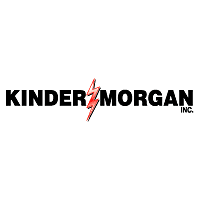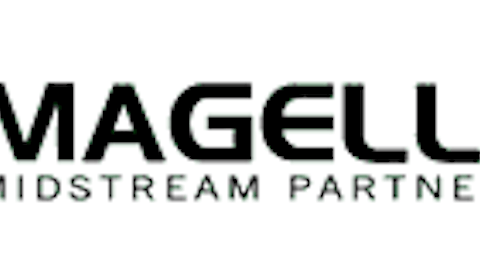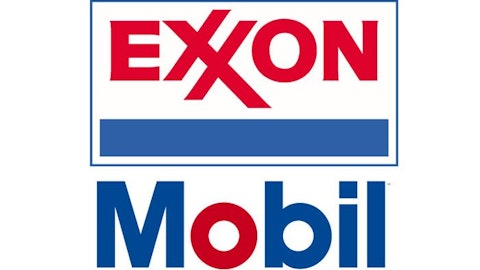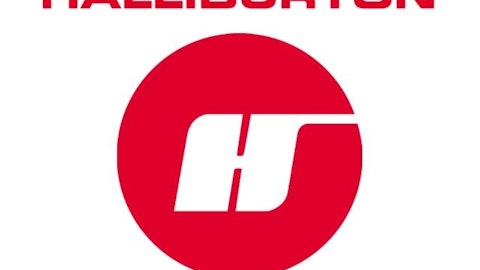On Wednesday, Sept. 4, an email sent out by research firm Hedgeye, along with the author’s comments on Twitter , caused shares of Kinder Morgan Inc (NYSE:KMI) to fall 6% . Hedgeye claimed that the Kinder Morgan Inc (NYSE:KMI) pipeline companies were “a house of cards” and that a report detailing this would be released on Tuesday, Sept. 10 .
Beyond the obvious questions of why announce it this way and why the delay, the share price movement shows how silly some investors are, selling on the merest whiff of supposition without taking time to see if analyst Kevin Kaiser of Hedgeye was right or blowing smoke.
Instead of knee-jerk selling, I held the shares of Kinder Morgan Inc (NYSE:KMI) my wife and I own, read the report when it finally came out, and was not impressed.
The thesis
The major point presented by Kaiser is that Kinder Morgan Inc (NYSE:KMI) has very low maintenance capital expenditure (capex), presumably cuts maintenance capex upon acquiring other pipeline operators which leads to an increased incidence in pipeline accidents, and then uses replacement of the pipes (an expansion capex) instead to “catch up” on neglected maintenance.
The reason for this is to enrich Kinder Morgan Inc (NYSE:KMI) (the general partner of the limited partnerships KMP and El Paso Pipeline Partners, L.P. (NYSE:EPB) ), as well as Richard Kinder, at the expense of the unit holders of the limited partnerships . This enrichment happens in part because maintenance capex is deducted from distributable cash flow (DCF) payable to all the partners, while expansion capex is not. By shifting maintenance capex to expansion capex, more DCF is available.
Kaiser also argued that Kinder Morgan Inc (NYSE:KMI) receives too much in incentive distribution rights , but I’m not going to address that here.
Maintenance capex and DCF
So is Kinder Morgan’s definition of DCF unique? I looked at how El Paso Pipeline Partners, L.P. (NYSE:EPB) defined DCF and where maintenance capex fit in. Prior to being acquired by Kinder Morgan, it too removed maintenance capex when calculating DCF. Magellan Midstream Partners, L.P. (NYSE:MMP) and Boardwalk Pipeline Partners, LP (NYSE:BWP), two other pipeline operators, both define DCF the same way. Seems to be industry standard, so nothing apparently nefarious there.
Kaiser argues, however, that Kinder Morgan uses the “apophatic definition” that any capex that is not expansion capex is maintenance capex , and can assign dollars spent to either category. But Kinder Morgan is hardly unique here, either.
Looking again at El Paso Pipeline Partners, L.P. (NYSE:EPB), they define it the same way. Not in those specific words, but in context : “Our total cash capital expenditures for the year ended December 31, 2011 were $264 million, including $101 million for maintenance and $163 million for expansion.” Other pipeline operators I looked at also split total capex into the same two categories.
It’s industry standard, so why should Kinder Morgan be called out? However, Kaiser has more points to argue.
Maintenance capex vs. depreciation
Kaiser argues that maintenance capex should be larger than depreciation . Why? Besides an inflation argument that I found quite confusing , he points out that Chevron Corporation NYSE:CVX) and Exxon Mobil Corporation (NYSE:XOM) spend huge amounts in capex in order to keep production constant, much more than depreciation. The thought appears to be that these guys are in the oil and gas business, just like Kinder Morgan, so Kinder Morgan should also have maintenance capex at least equal to depreciation.
Pipelines are pretty static things, once they’re installed. The only moving parts that would require regular replacement are the valves, the pipeline inspection “pigs,” and the compressors in the compression stations . Only if a leak is found or corrosion is discovered does there need to be expensive replacement of part of the pipeline.





